FAMILY HEIRLOOM
The secret I discovered when I took my mother's vintage sewing machine to be repaired

Not long before my first day of kindergarten, my grandmother took my measurements. She measured me around my little chest and around my little waist and my little hips. She measured the length from my shoulder to my knees and from shoulder to shoulder.
Then she sent the measurements to my mother, who lived in another town but who was never far away from my heart, nor me from hers.
A few weeks later, a box arrived in the mail. The box contained my school clothes: They weren't school clothes that my mother bought – they were school clothes that my mother made.
It was all such a big deal. My grandmother would let me know that my mother made these clothes especially for me and that nobody else had these clothes. We would take them out of the box, one outfit after another, and then spread them out on the bed so that we could admire them. There were plaid dresses, jumpers, dresses with belts and big bows, and even a circular skirt with a poodle on it.
Sometimes, the sizes might be a little off, so my grandmother would make minor adjustments to get the fit just right.
I didn't know it at the time, but not only were the women of my family making the clothes that I wore from elementary through high school. They were teaching me an invaluable skill that doubles as a pastime that I still enjoy to this day. And that is, how to sew well enough to make my own garments.
My memories of clothes-making span a lifetime – from the boxes of homemade school clothes that my mother used to send to the black dress I made to attend my mother's funeral. They range from clothes I made for myself in middle school and high school to an ensemble that I started to reimagine the other day with my mother's old Singer sewing machine – that is, until the repairman told me a secret that would enable me to salvage the vintage machine and better understand its worth.
Following a pattern
Growing up in a three-bedroom home in Marshall, Texas, my bedroom was situated right next to my grandmother's bedroom. At night she would sew. I would hear the rumbling of her sewing machine.

I would come in the bedroom and she would have the pattern spread out on the bed because she didn't have a sewing table. It would be nice and smooth and flat. It had to be so the cuts would be precise and everything would be straight.
The sewing machine was right next to the bed. It was a cabinet that basically doubled as a nightstand. It was a big deal to have a cabinet sewing machine back then because you'd open it up and pull the machine up and then let it back in and back down when you were done.
I would watch my grandmother's every move. And she saw my interest. Plus her daughter, my mother, was a seamstress. And so she started letting me do little things to help her.
Firsts cuts
I remember the first time I got a chance to use the scissors with a sharp point. I really wanted to use the same scissors that my grandmother used, not the ones with the rounded ends like we had in school. I wanted to use the big scissors.
And so my grandmother helped me. She would hold my hand and let me cut – not anything intricate but just along the straight lines.
I was fascinated just watching her run the fabric under the machine. I was mesmerized with the humming sound that it would make whenever she put her foot on the pedal that made it run.
I would stay awake as long as my grandmother would stay up sewing. I would watch her until she would make me go to bed. I always wanted to see the garment completed.
A pair of my own
Some kids go to camp for the summer. For me growing up in the 1960s and 70s, summertime meant going with my grandmother to visit my aunt in Compton, California.
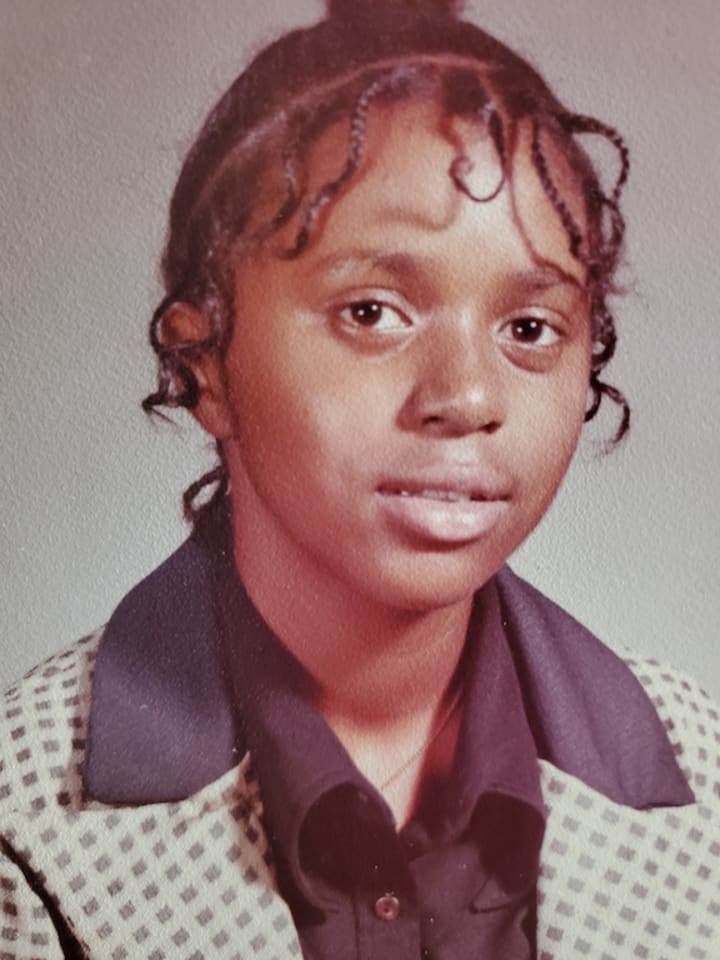
Those summers were filled with day-long shopping trips to high-end department stores, boutiques and the finest fabric stores in the area.
By the time I reached 5th grade, my sewing skills had developed quite well. During one trip to a fabric store, my aunt asked my grandmother if she needed anything else.
"New scissors," my grandmother replied.
My aunt, who did not sew, would usually just buy top-of-the-line products no matter what. In this case, she bought a pair of Fiskars. My grandmother was so appreciative of the fact that she got a pair designed for her left hand.
At first she wouldn't even let me use them, at my aunt's instruction. That didn't last long. After a few months, that's all I used. We were both left-handed.
The next summer when my aunt asked my grandmother what she needed, my grandmother said, "I need you to get Michelle her own Fiskars."
Making clothes anew
My aunt, a schoolteacher in California, used to send me her old dresses from the 1950s that were made with a lot of fabric. She spent a lot of money on them and my grandmother wanted me to wear them, but I had no interest in wearing clothes from the 1950s when it was the 1970s. Like any teenager, I thought I would look crazy trying to wear those clothes to school. So I convinced my grandmother to let me redesign the clothes. So she called my aunt in California and asked her if I could take them apart. My aunt agreed.

What I ended up doing was taking the zippers out, taking the waistband off, and by the time I did that and unhindered it, I would have six yards of a big piece of fabric that I could use to make whatever I want.
My grandmother would help me because it was very tedious to take the hems out and undo the seams in order to have a bigger piece of fabric.
After a while it became customary for my aunt to send me a box full of big skirts that I never had any intention of wearing. I would open the box knowing that I'd soon be taking them apart.
So I started designing my own clothes and by the time I got to ninth grade and took home economics, I already knew how to sew because I had been sewing since I was in elementary school.
It started out as a way for my grandmother to keep me busy but it evolved into a way of self-expression.
I would take jeans and turn them into dresses, purses and skirts. I would pick them loose and just reconstruct them.
Self-designed luxury
By the time I got to high school, I was making my own clothes. I even made my own winter coat. I wanted a fur coat and it was a big deal for me to make it, even though it was fake fur. But my grandmother cautioned me: "Yeah, you can make your coat, but make sure you make it big enough because this is the only coat that you're going to get." She knew I liked wearing things kind of tight, so she insisted that I made sure I had enough room in my arms and my elbows for this coat.
It turned out great. It had a hood and a brown inset. Once I made this coat, I started experimenting with different fabrics and different combinations of things.
A dress made to mourn
When my mother died in 1981, a couple of months after I graduated from college, I actually made that the black dress that I wore to her funeral. I made it the day before the funeral.

I didn't have any mementos from my mother. So the black dress that I made for her funeral became a symbol of one of the things that bonded us: sewing.
Sewing connected us. It was, you might say, a family heirloom.
So it was fitting when, a few years ago, my sister called me and said: "'Oh, you know, I have mom's sewing machine. Do you want it?'"
After decades of having only memories of the bond of sewing that I had with my mother, I now had an actual physical heirloom.
Fortunately, my sister also had some fabric.
I pulled all that stuff out recently as I was moving into a much smaller place. The sewing machine brought back so many memories. So many memories that I wanted to use it to sew something to bring a sense of calm to the chaos of moving.
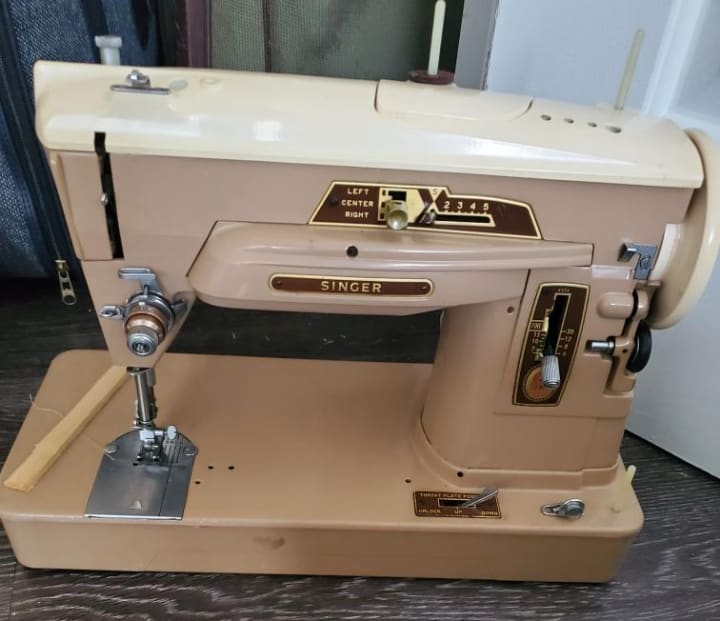
My mother's Singer sewing machine had not been used in over 40 years. As I go through her sewing box, I think of all the fabric and patterns I used to buy with the intent of making some sort of fashion statement – but always getting caught up with work and life.
Many of those patterns and fabric got destroyed over the years – once by fire and once by flood. Or lost or misplaced.
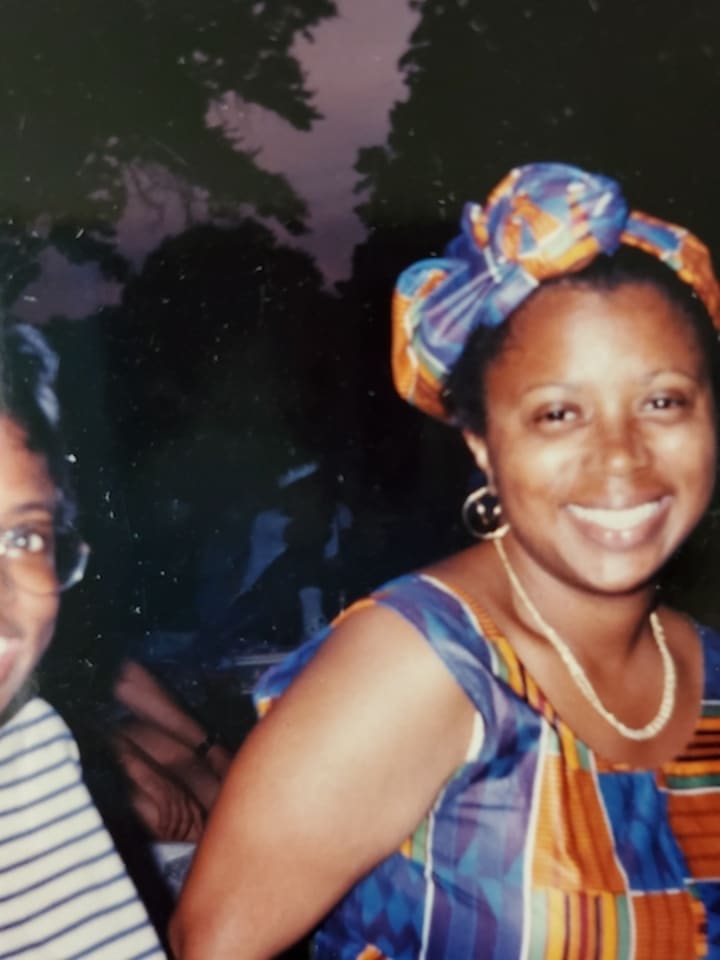
I think back to the days when I used to redesign clothes. I scanned the piles of clothes that littered the room of my new home and settled on two caftans that I reluctantly planned to send to Goodwill, one a gift from my niece and nephew some 20 years ago and the other I bought to celebrate my 60 birthday a few years ago.
I rarely wear either but was holding on to them out of sentiment. I wonder if breathing new life into them will bring about a much-needed sense of accomplishment.
Since my mother's sewing machine hasn't been used for 40 years, I know before I can before I even plug it in I need to take it to have it serviced. So on May 26, 2021, at 9 a.m., I stop unpacking and stop worrying about the state of my life.
With my mother’s vintage sewing machine in tow, I head to an Annapolis quilt shop called The Crabby Quilter, of all things, to have it serviced. But since they only serviced Bernina sewing machines, I go to another shop – Chapman Vac and Sew.
I already know my mother's sewing machine was vintage. But much to my surprise, the owner tells me that my mother’s sewing machine is classic and could be worth up to $1,000.
He commends me for doing the right thing by bringing it in before trying to use it because the metal of the machinery gets brittle and weak with lack of use. He says I would have ruined it had I tried to use it.
I leave the machine in Mr. Chapman's able hands and head off to the fabric store in search of a design worthy of my hapless caftans. I’m thinking I want to create some kind of reversible sundress—two outfits in one. I am intrigued by this idea since both caftans are made from the same type of fabric with differing patterns.
As I search Butterick, Vogue and McCall pattern books, a palazzo pants and suntop midriff catch my eyes. Sundress forgotten. I purchase the pattern and buy a sewing machine on sale for $169 – partially out of reverence for what I now know is the classic vintage sewing machine once owned by mother, but also out of impatience to get started.
As I looked through my mother's sewing kit, I saw several tape measures, several pin cushions, several seam rippers, two thimbles, and one pair of scissors: her Fiskars.
Scissors are the most valued tool in the toolbox. Like a master chef treasures their knives, so it is with a seamstress. I'm ready to find my inner calm.

You know how it is when you have a close friend and you haven't talked to them for a while, but when you're on the phone and you talk with them for hours and hours and it's just like you talked to them yesterday? That’s how I felt as I started to carefully lay out the delicate paper pattern on the fabric.
I measure twice, because I can only cut once. Ask me how I know this to be true.
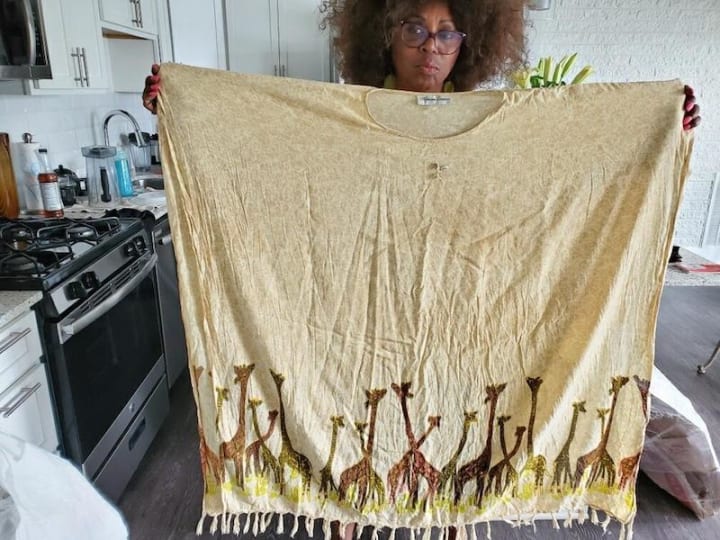
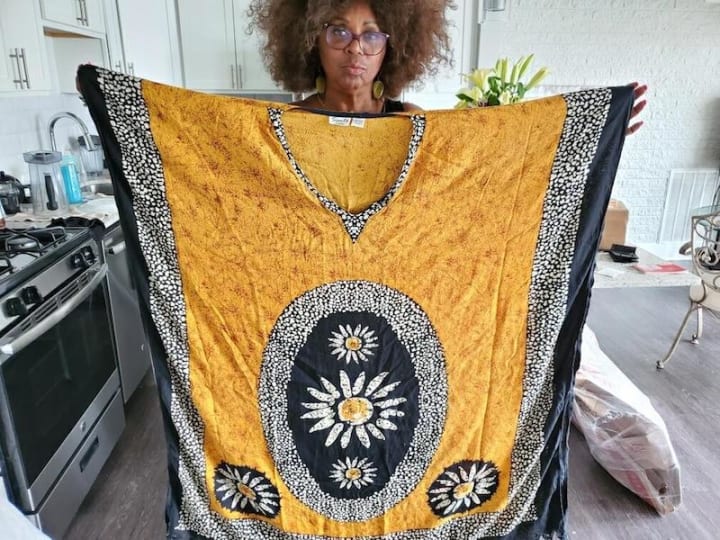
Soon I find myself in a zone, focused on finishing this project. I am not thinking about the chaos around me. I am in my own world enjoying the moment, enjoying the process of creation, letting the familiar and almost forgotten process of creation wash over me.
I think about how the famed black designers – current and back in the day – found fame by losing themselves in the creative process. Their minds just wandering and wondering about the beautiful possibilities before them.
So today I'm cutting. I'm anxious to get to the end. I want to finish it but I want to stay in the process all at the same time. I cut. I pin. I sew. I create. I iron. Piece after piece. I repeat the process. I measure. I cut. I pin. I sew. I create. I iron. I finish. And 12 hours later my palazzo pants and sun top hang on the outside of my closet door and I fall into a much needed deep sleep.

The all-nighter will be worth it when someone says to me, “Girl where did you get that outfit? It is so cute.” And I say, “I made it myself.” And they look at my creation with admiration and I get a chance to tell them this story.
Forever hers
My mother's sewing machine has been fixed. It's usable. And I'm keeping it. For sentimental reasons – not really to use it.
As long as I don't use it, my mother will still be the last person to have sewn on it. I'm preserving her ownership. Out of reverence. To protect it. Like not using good china or towels or keeping furniture covered in plastic. I just want to be reassured by its presence and reminded that I have her gift. Being able to look at it is enough.
About the Creator
Michelle Petties
We all have unique stories that lead us. I speak to organizations, large and small, sharing unique perspectives and my story of hope, healing, and triumph. Need an engaging, thought-provoking, and transformative speaker? Ping me.


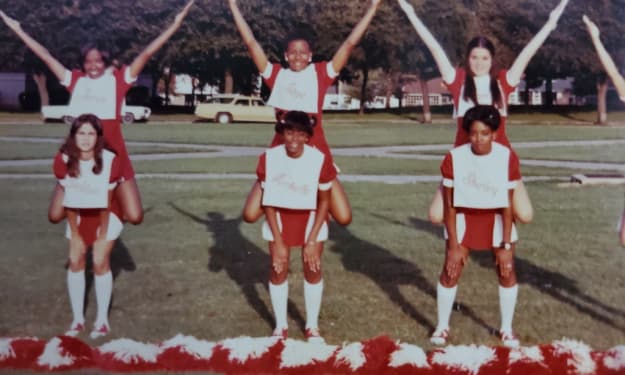
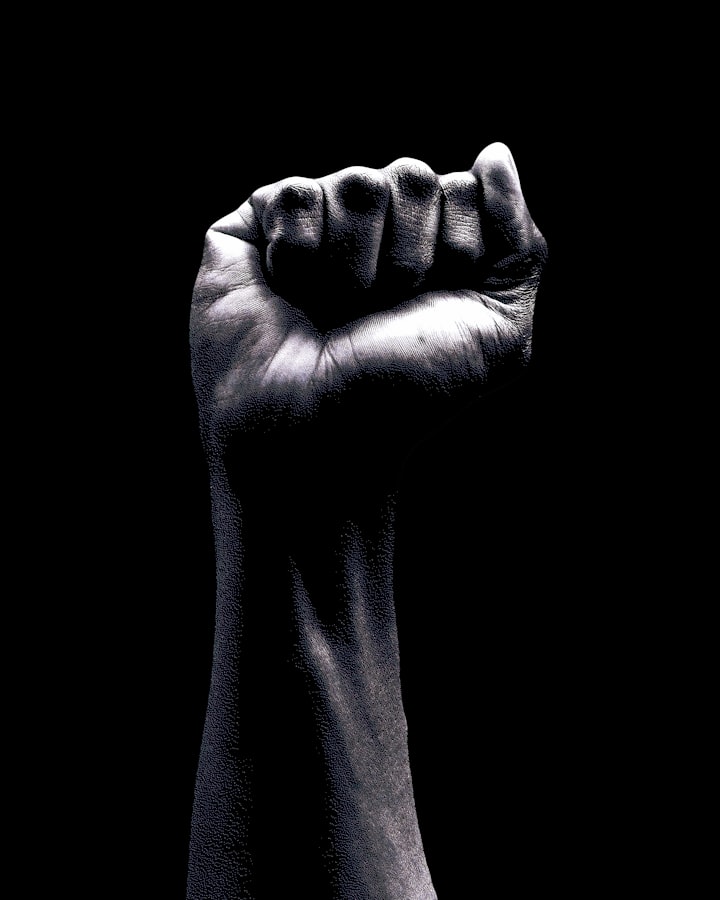


Comments
There are no comments for this story
Be the first to respond and start the conversation.